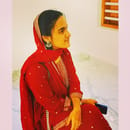I’ve never paid heed to the culture of matriliny practiced by my community, but as I grew up and transited from my hometown, I couldn’t believe that this system we practice is unknown to many. What hit me more is that even the people from my state had no inkling about this unique system. When I try to shed some light on this peculiar culture, a few often dismiss it as fragile and redundant, which puts me in a situation of finding answers to the question they raised.
A plausible claim of how matriliny shapes the exterior and interior persona of women in my community has given me validation for the legacy we follow. Contemplating what it is like to be born in a matrilineal lineage, I’ve learned many intriguing facts that we often ignore. Let’s explore these in greater detail.
Matriliny is a system that is primarily practiced in two states of India—one is Meghalaya and the other is Kerala. The system entails a tradition wherein the family line traces are inclined to an individual’s maternal family. Often people misperceive the notion of matriliny as matriarchy, but matriarchy is a system where the head of the family is a female. However, in matriliny, the head of the family is the eldest male member of the maternal line who is christened to be a Karnavan. Marumakkathayam or the matrilineal form of inheritance is a paramount social practice that prevailed in Kerala from the 9th century AD onwards. The disintegration of the second Chera Empire and the socio-political developments that ensued engendered the rise of matriliny on the Malabar coast. Matrimony is often corroborated with the system of joint family and a common tarawad which is the ancestral home of the maternal line. The eldest female member is entrusted with all the ancestral property and the legacy goes on with the property being shared by the female members of the family.
The Nair Community, which is a predominant warrior class in Kerala, practiced this culture widely. Owing to their over-indulgence in warfare, they had to desert their family and their wives had to fend for themselves, eventually becoming the family’s custodians. Apart from Karnavan, the rest of the male members are merely visitors. Other Hindu Communities like Ezhavas, Samantans, and Ambalavasis also practiced this matrilineal institution. The prevalence of marumakkathayam among the Mappila Community of the Malabar coast is still a mystery which attributes various factors to this practice. There exist innumerable interpretations. Some are of the view that Muslims aped the culture of Nairs through inter-religion marriages and conversions.
Being born and raised in a matrilineal family, I’ve noticed the adaptation of Muslim sharia into this peculiar culture. Earlier, the property was divided solely among the family’s daughter, but my observations gave me a different and cohesive picture of incorporation. Taking my family into the picture, my ancestral home was given to my aunt and the rest of the land beside it was divided among the siblings equally, irrespective of their gender. This indicates the norms of men being the protector of the family and the provider of basic needs are being considered and they are given an equal share in the property, as the sharia says.
The Mappila Community hailing from the Kannur district of Kerala is the only living matrilineal institution in Kerala, as most of the others got withered away. Here, it is true that married men have to shift to their wife’s family homes, but they still retain the property inherited from their ancestors. Although it is assumed that the possibility or incidence of domestic violence or the dowry system is completely alleviated in the district, in my opinion, this system hinders patriarchy and its relative tropes of dominating women and abusing them. This is because the protectors of our realm, our parents, are the steward of our ship and no matter what, they will help us sail through the intricacies caused due to patriarchy within the four walls.
But this system of matriliny doesn’t guarantee an egalitarian society, as patriarchy is complemented by patriline. Since men dominate, even matriliny adheres to a different shade of patriarchy. Patriarchy is a trait that is universally scattered in every region and culture, and quashing this is a herculean task.


